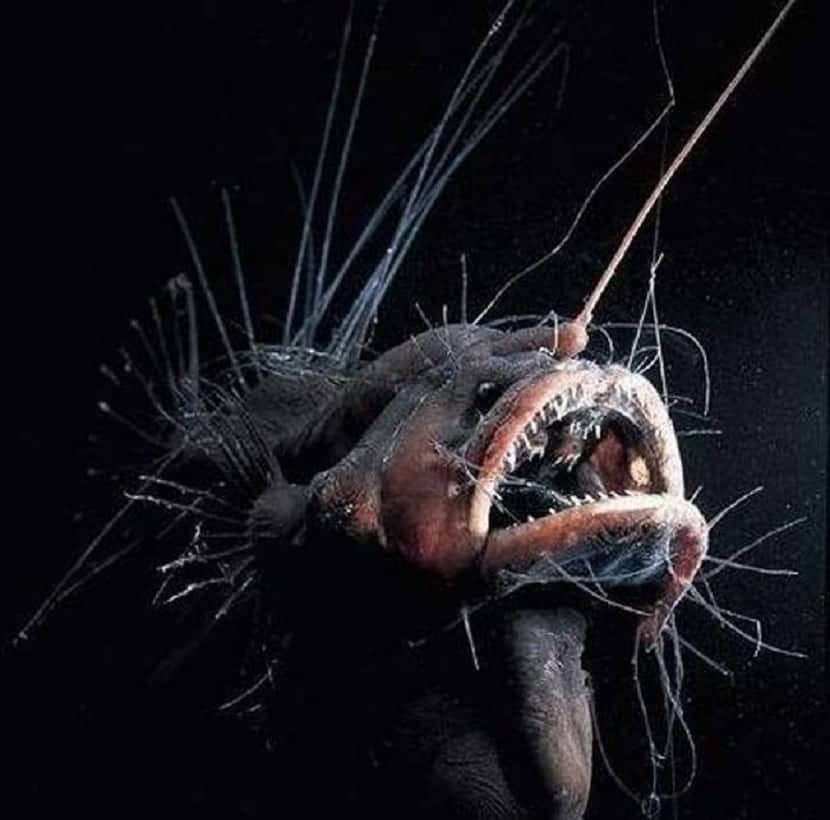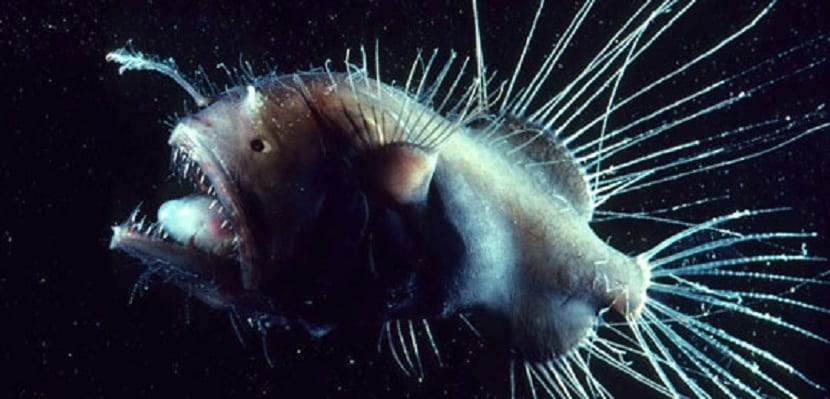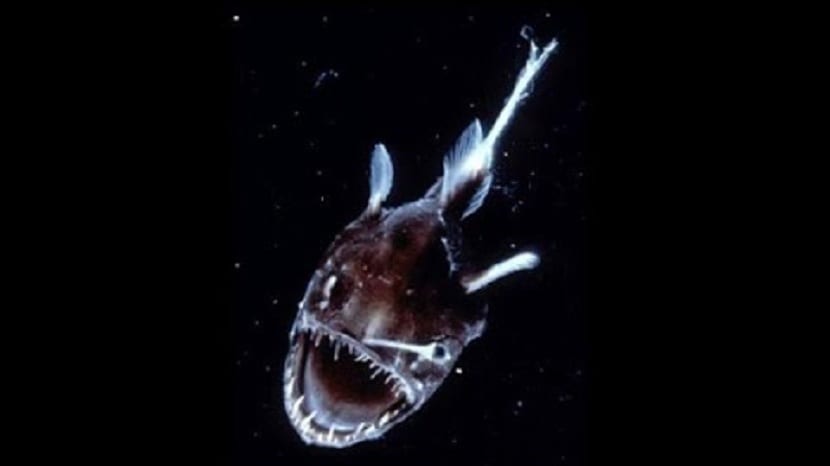
We previously wrote about a very strange fish that lives in the depths of the sea known as monkfish. Today we return with another rare fish to add to our list de peces not Commons.
It is about the Fanfin fish or also known as the demon of the sea. This fish, like the monkfish, since they are of the same order, lives in the depths of the sea, more or less about 1.000 meters (reaching a depth of 3.000 meters), which belongs to the family Caulophrynidae and to the order of lophiiformes and what can get to measure up to 25 cm without counting its large filaments and antennas. Do you want to know more about this strange fish?
Fanfin fish or sea demon

Deep-sea fish are stranger and with morphologies not very common in shallower waters because they must adapt to places where there is little or no incident sunlight. The large filaments and the antennae serve the fish to be able to move through the places of the abyssal depths without the need for light.
It is called the demon of the sea because of its fearful appearance. Like the monkfish, the Fanfin fish has a rather unfriendly appearance and, in addition, dangerous. You could say that he is quite a bully from the abyssal depths.
This fish is characterized by being part of the anglerfishes. These fish are those that are characterized by being pelagic and benthic. That is to say, they are fish that are capable of living not very far to the surface and, in turn, also live in the depths.
Fanfin fish characteristics

Fanfin fish are large marine predators and inhabit the depths of the Pacific, Indian and Atlantic oceans. In order to hunt its prey it has a bioluminescent organ to use as bait. Like the monkfish, this organ arises as a result of a symbiosis with bacteria that are capable of synthesizing chemical compounds that generate bioluminescence. The characteristics of the monkfish and the Fanfin fish are very similar, since they belong to the same order, the Lophiiformes.
This fish has to be prepared to survive environments with little sunlight and few nutrients. There are remains de peces that reach the seabed attracted by gravity, but they are not enough to feed these fish. Thanks to their antennae and filaments, Fanfin fish they are able to detect the morphology of the terrain in those deeper places where there is no light.
As for the bioluminescent organ, it does not use it to illuminate itself as a flashlight, but instead uses it as an attraction for prey. Fish see a light in the dark and end up guiding themselves to it. When the prey is close enough to the Fanfin fish, it will be able to detect it thanks to its filaments and antennae to attack and eat it.
This complex way of life where there are hardly any nutrients, no photosynthesis or plankton has allowed this animal to develop certain morphologies (such as antennae, filaments and the bioluminescent organ) in order to survive and adapt. These fish are worth knowing and studying since their rarity could give us a lot of information about the way of life down there in the abyssal depths.
Fanfin fish sexuality

The way of reproduction of the Fanfin fish is quite curious. They reproduce by sexual dimorphism and it is quite accentuated. This means that the male and the female are very different. As in many species of animals, the male is vastly smaller in size than the female (for example, this occurs in mites).
During the larval stage, males and females live freely, but when they reach maturity, as with monkfish, males become parasites of females. The males become a mere extension organ of the female and would be parasitizing her.
The reason why these fish have this very characteristic mode of reproduction is because in the abyssal depths it is very difficult to find a mate. In this way, when a male and a female interbreed, the male makes sure not to lose the female becoming a parasite as part of its body.
This family de peces It is not as in demand as monkfish in gastronomy due to its filaments and antennae. However, it is also affected by the effects of climate change. such as rising water temperatures or acidification.
As you can see, deep sea fish are very characteristic and special due to their complex living conditions. Furthermore, there are still many species de peces and other unidentified organisms due to the difficulties of accessing such deep places.